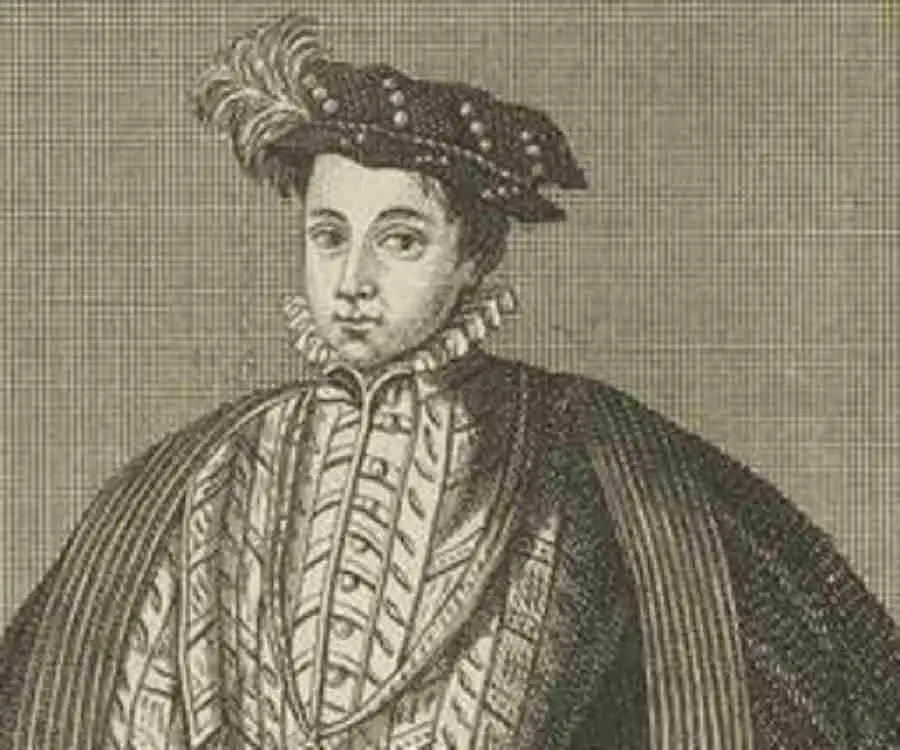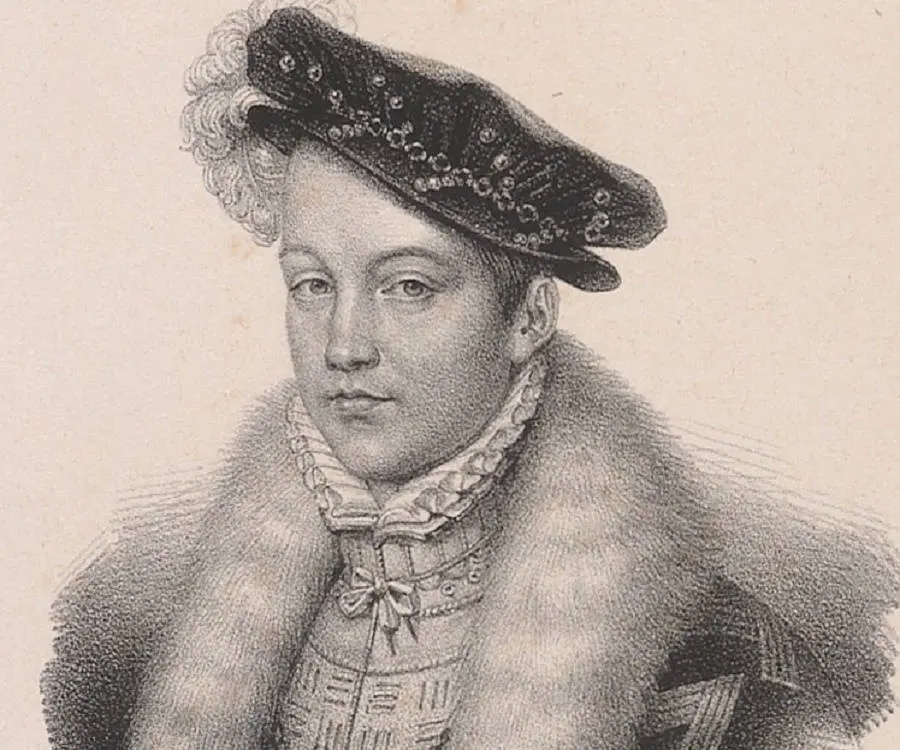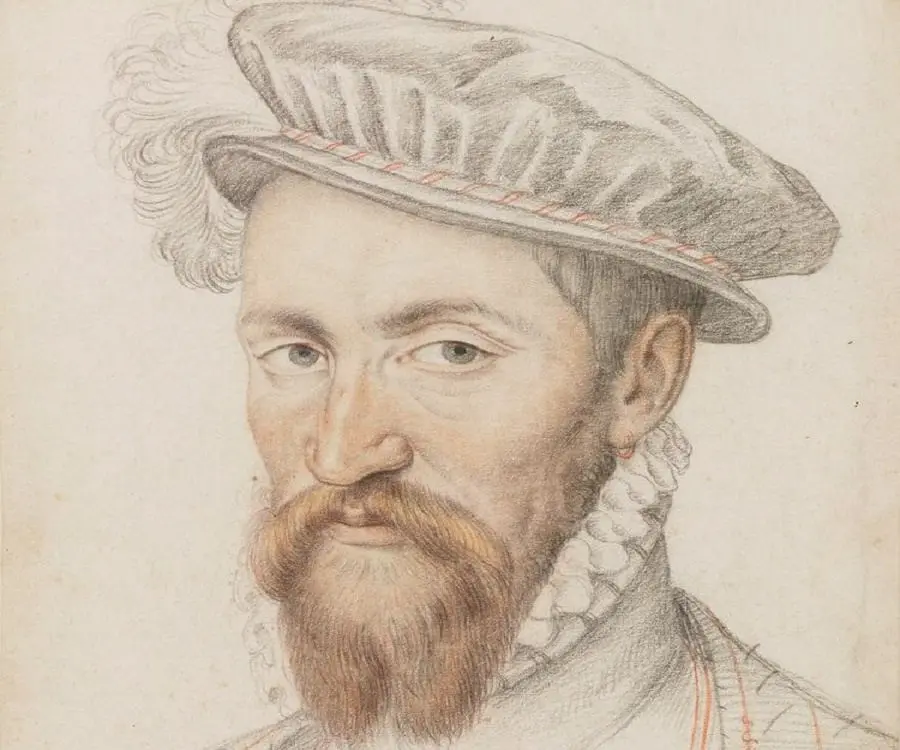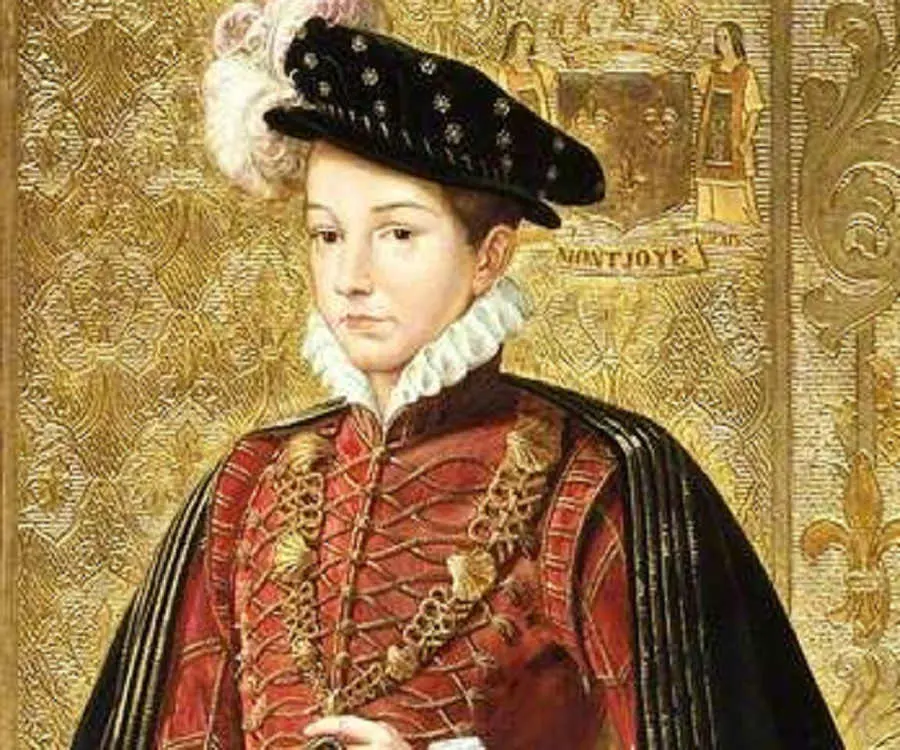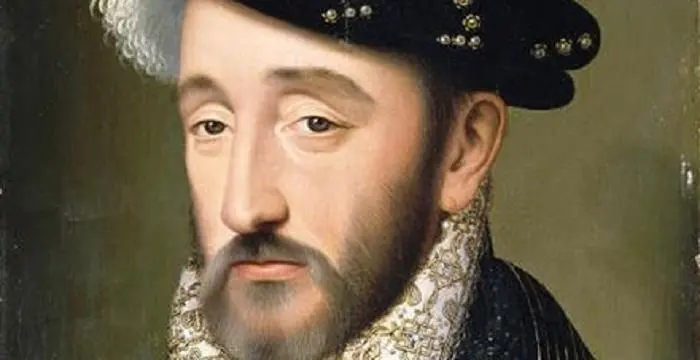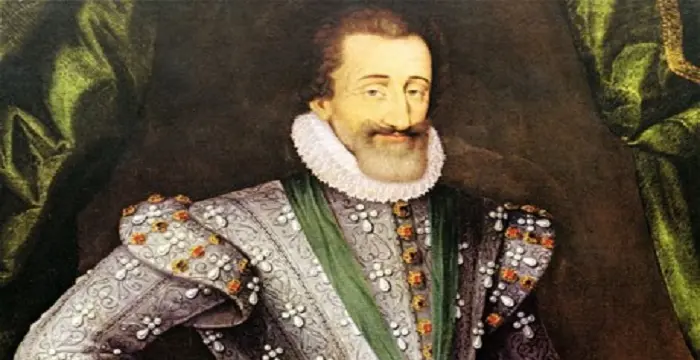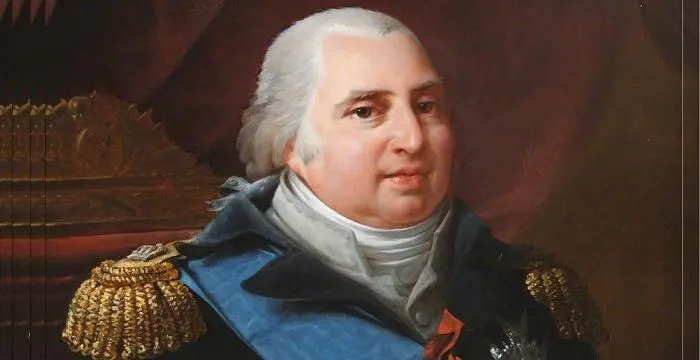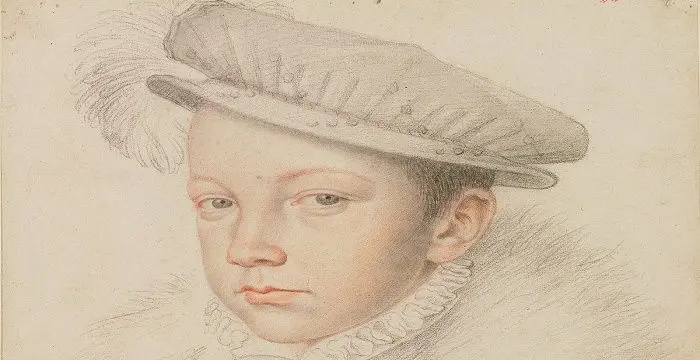
Francis II of France - Kings, Life Achievements and Family
Francis II of France's Personal Details
Francis II of France was the eldest son of King Henry II and Catherine de’ Medici
| Information | Detail |
|---|---|
| Birthday | January 19, 1544 |
| Died on | December 5, 1560 |
| Nationality | French |
| Famous | Historical Personalities, Emperors & Kings, Emperors, King of France, Kings |
| Spouses | Mary, Queen of Scots (m. 1558–1560) |
| Siblings | Charles IX of France, Henry III of France, Margaret of Valois |
| Birth Place | Fontainebleau |
| Gender | Male |
| Father | Henry II of France |
| Sun Sign | Capricorn |
| Born in | Fontainebleau |
| Famous as | King of France |
| Died at Age | 16 |
// Famous Emperors
Sundiata Keita
Sundiata Keita was the founder of the Mali Empire in West Africa. This biography profiles his childhood, early life, struggles, founding of empire, rule, administration, achievements and also gives some fun facts.
Ashoka
Ashoka was the third emperor of the Mauryan Dynasty and ruled almost the entire Indian subcontinent. This biography profiles his childhood, life, reign, achievements and timeline
Murad IV
Murad IV was one of the mighty Sultans in the history of the Ottoman Empire. This biography profiles his childhood, family, accession, rule, administration and timeline.
Francis II of France's photo
Who is Francis II of France?
Francis II of France was the eldest son of King Henry II and Catherine de’ Medici. He was a sickly child with stunted growth. His father got him betrothed to Mary, Queen of Scots, when he was 4 years old. This gave him the right to the throne of Scotland and assured the Scots protection of the French against the British. He got married at the age of 14 and became the king of France at 15, when his father died in a jousting accident. Francis II chose his wife’s uncles, Francis, the duke of Guise, and Charles, the cardinal of Lorraine, as his regents. The legitimacy of the Guises was questioned by the “Princes of the Blood,” who felt they were exploiting the weakness of the king. The rule of Francis II was marked by a repressive policy toward the Protestants that gave rise to the Amboise conspiracy. His rule was hampered by local revolts, which made him more authoritarian to help him hold on to power. He continued with the peace efforts started by his father, and that involved realignment of boundaries with neighboring states and rehabilitation of displaced families. Francis II died in Orléans due to multiple medical complications, having reigned for just 17 months. Since he had no children, his younger brother, Charles, succeeded him as the king of France, and his wife returned to Scotland.
// Famous Kings
Sundiata Keita
Sundiata Keita was the founder of the Mali Empire in West Africa. This biography profiles his childhood, early life, struggles, founding of empire, rule, administration, achievements and also gives some fun facts.
Ashoka
Ashoka was the third emperor of the Mauryan Dynasty and ruled almost the entire Indian subcontinent. This biography profiles his childhood, life, reign, achievements and timeline
Murad IV
Murad IV was one of the mighty Sultans in the history of the Ottoman Empire. This biography profiles his childhood, family, accession, rule, administration and timeline.
Childhood & Early Life
Francis II was born on January 19, 1544, at the ‘Château de Fontainebleau,’ France. He was the eldest son of King Henry II of France and Catherine de' Medici. It is believed that he was born eleven years after his parents’ marriage, because of his father’s involvement with his mistress, Diane de Poitiers. He was named after his grandfather, King Francis I.
He was raised at the ‘Château de Saint-Germain-en-Laye’ and baptized in February 1544, in the presence of his godparents, Francis I, Pope Paul III, and Marguerite de Navarre. He suffered from respiratory problems and stunted growth during his early childhood, and that continued to trouble him throughout his life.
He was tutored by a Greek scholar named Pierre Danès and learnt dancing and fencing from Virgilio Bracesco and Hector of Mantua, respectively. He was raised by Jean d'Humières. He was appointed as the governor of Languedoc in 1546 and the dauphin of France in 1547, when his grandfather, Francis I, passed away.
He was betrothed to Mary, Queen of Scots, at the age of 4, by the ‘Treaty of Haddington’ in July 1548. The treaty sought the protection of France for Scotland, against the British invasion. Mary was sent to France to be raised at court till she got married to Francis II at the ‘Notre Dame Cathedral’ in Paris on April 24, 1558. He was 14 years old and she was a year older when they got married.
The wedding gave the future king of France access to the throne of Scotland and to England, through Mary’s great-grandfather, King Henry VII of England. Francis II remained the king of Scotland till he died.
Career
Francis II became the king of France on July 10, 1559, at the age of 15, after the death of his father in a jousting accident. He was crowned in Reims on September 21, 1559, by his uncle, Charles, the cardinal of Lorraine. He adopted the Sun as his emblem. His mottos were “Spectanda fides” and “Lumen rectis,” which meant “This is how faith should be respected” and “Light for the righteous,” respectively.
Although according to French custom, Francis II was an adult at the age of 15, he chose his wife’s uncles, Francis, the duke of Guise, and Charles, the cardinal of Lorraine, as his regents. The duke of Guise headed the army, while Charles took care of the finance, justice, and diplomacy departments.
‘The House of Guise’ gained power under King Francis II, and the king’s rival, Constable Anne de Montmorency, lost his say. His father’s mistress and her protégé, Jean Bertrand, were also sidelined, while the Guises were given the title of the “Grand Master of France.”
The legitimacy of the Guises as rulers of France was questioned by the “Princes of the Blood.” The Guises were viewed as power-hungry rulers who were exploiting the weakness of the king. Their financial policies were also disastrous.
The rule of Francis II was marked by a repressive policy toward the Protestants, which gave rise to the Amboise conspiracy to overthrow the king and the ‘House of Guise.’ His rule was hampered by local revolts, due to which he had to become more authoritarian to hold on to power.
In March 1560, Francis II granted general amnesty to the Protestants. However, the Amboise conspiracy to take over the palace and abduct the king with the help of the royal guards was already under way. Fortunately, the conspiracy failed due to poor planning and organization.
Francis II wanted to be lenient on the revolting soldiers on the condition that they put down their arms. However, the palace was stormed, resulting in a bloodbath that ended with the deaths of hundreds of rebels and the arrests of the leaders of the conspiracy.
Following the Amboise conspiracy, the royal council realized that persecuting the Protestants would only make things worse. Francis II ordered clemency toward the Protestants and released all religious prisoners. This was the first time religious tolerance was displayed since the rule of Henry II.
The reconciliation was opposed by the Guises, which made the Queen Mother intervene and officially call for a general council, without the consent of Pope Pius IV. Christians of all sects in Europe were called upon to unite and reconcile with each other. The “Princes of the Blood” were also brought back to resume their roles in the king’s council.
The policy that was brought in to ease the tension between the Protestants and the Catholics only encouraged the Protestants in the rural areas to congregate against the government. Francis II was forced to finally mobilize his troops to bring in normalcy by the use of force.
He continued with the peace efforts, which Henry II had started with the Habsburg Empire, and returned land conquered by France over the last 40 years. This reduced the influence of France in Europe, to the advantage of Spain. The implementation of the treaty signed by Henry II involved realignment of boundaries, with exchange of territories and rehabilitation of displaced families.
Following the marriage of Francis II and Mary Stuart, Queen of Scots, Scotland was to become part of France if the royal couple did not have any children. The Scottish lords did not like this clause and organized an uprising against the queen and her French council. The revolt was supported by England. The ‘Treaty of Edinburgh’ was signed and ended the French occupation of Scotland. Following this, Scotland established Protestantism as its state religion.
Awards & Achievements
Francis II remained the king of France from 1559 to 1560.
He was the “King Consort of Scotland” in 1558.
He was appointed as the duke of Brittany in 1544 and the dauphin of Viennois in 1547.
Personal Life & Legacy
Francis II was betrothed to Mary, Queen of Scots, at the age of 4 and ascended the throne of France at the age of 15. Although he was an adult according to the French law, he was an inexperienced and weak ruler who was exploited by his advisors. He wanted to bring reconciliation and peace in his kingdom, but his policies had the opposite result due to poor statesmanship.
He suffered from poor health that further hampered his rule. He died on December 5, 1560, in Orléans, due to multiple complications, having reigned for just 17 months. He had no children. Thus, his younger brother, Charles, succeeded him. His wife returned to Scotland.
Trivia
It was rumored that Francis II was poisoned by the Protestants. However, this has not been proved.
One of the main characters of the American historical romantic-drama series ‘Reign’ was based on Francis II. The character was portrayed by actor Toby Regbo.
// Famous King of France
Henry II of France
Henry II of France was a monarch who ruled France from 1547 to 1559. Check out this biography to know about his birthday, childhood, family life, achievements and fun facts about him.
Henry IV of France
Henry IV was King of Navarre and King of France from 1589 to 1610. This biography of Henry IV profiles his childhood, life, reign, achievements and timeline.
Louis XVIII of France
King Louis XVIII was the King of France from 1814 to 1824. Check out this biography to know about his childhood, life, achievements, works & timeline.
Francis II of France biography timelines
- // 1544 To 1547He was appointed as the duke of Brittany in 1544 and the dauphin of Viennois in 1547.
- // 19th Jan 1544Francis II was born on January 19, 1544, at the ‘Château de Fontainebleau,’ France. He was the eldest son of King Henry II of France and Catherine de' Medici. It is believed that he was born eleven years after his parents’ marriage, because of his father’s involvement with his mistress, Diane de Poitiers. He was named after his grandfather, King Francis I.
- // Feb 1544He was raised at the ‘Château de Saint-Germain-en-Laye’ and baptized in February 1544, in the presence of his godparents, Francis I, Pope Paul III, and Marguerite de Navarre. He suffered from respiratory problems and stunted growth during his early childhood, and that continued to trouble him throughout his life.
- // 1546 To 1547He was tutored by a Greek scholar named Pierre Danès and learnt dancing and fencing from Virgilio Bracesco and Hector of Mantua, respectively. He was raised by Jean d'Humières. He was appointed as the governor of Languedoc in 1546 and the dauphin of France in 1547, when his grandfather, Francis I, passed away.
- // Jul 1548 To 24th Apr 1558He was betrothed to Mary, Queen of Scots, at the age of 4, by the ‘Treaty of Haddington’ in July 1548. The treaty sought the protection of France for Scotland, against the British invasion. Mary was sent to France to be raised at court till she got married to Francis II at the ‘Notre Dame Cathedral’ in Paris on April 24, 1558. He was 14 years old and she was a year older when they got married.
- // 1558He was the “King Consort of Scotland” in 1558.
- // 1559 To 1560Francis II remained the king of France from 1559 to 1560.
- // 10th Jul 1559 To 21st Sep 1559Francis II became the king of France on July 10, 1559, at the age of 15, after the death of his father in a jousting accident. He was crowned in Reims on September 21, 1559, by his uncle, Charles, the cardinal of Lorraine. He adopted the Sun as his emblem. His mottos were “Spectanda fides” and “Lumen rectis,” which meant “This is how faith should be respected” and “Light for the righteous,” respectively.
- // Mar 1560In March 1560, Francis II granted general amnesty to the Protestants. However, the Amboise conspiracy to take over the palace and abduct the king with the help of the royal guards was already under way. Fortunately, the conspiracy failed due to poor planning and organization.
- // 5th Dec 1560He suffered from poor health that further hampered his rule. He died on December 5, 1560, in Orléans, due to multiple complications, having reigned for just 17 months. He had no children. Thus, his younger brother, Charles, succeeded him. His wife returned to Scotland.
// Famous Emperors & Kings
Sundiata Keita
Sundiata Keita was the founder of the Mali Empire in West Africa. This biography profiles his childhood, early life, struggles, founding of empire, rule, administration, achievements and also gives some fun facts.
Ashoka
Ashoka was the third emperor of the Mauryan Dynasty and ruled almost the entire Indian subcontinent. This biography profiles his childhood, life, reign, achievements and timeline
Murad IV
Murad IV was one of the mighty Sultans in the history of the Ottoman Empire. This biography profiles his childhood, family, accession, rule, administration and timeline.
Xerxes I
Xerxes I (Xerxes the Great) was the fourth and the most famous king of the Archaemenid dynasty of Persia. This biography profiles his childhood, family, personal life, life history, achievements, campaigns, administration, death and other facts.
Sargon of Akkad
Sargon of Akkad, also called ‘Sargon the Great’, ‘Sarru-Kan’ and ‘Shar-Gani-Sharri’, was the founder and first king of the Akkadian Empire. This biography profiles his childhood, life, rule, administration, timeline, and gives some fun facts.
Abdullah of Saudi Arabia
Abdullah bin Abdulaziz Al Saud was the King of Saudi Arabia from 2005 to 2015 and the third wealthiest head of state in the world. Find more facts about his life, childhood and timeline.
Francis II of France's FAQ
What is Francis II of France birthday?
Francis II of France was born at 1544-01-19
When was Francis II of France died?
Francis II of France was died at 1560-12-05
Where was Francis II of France died?
Francis II of France was died in Orléans
Which age was Francis II of France died?
Francis II of France was died at age 16
Where is Francis II of France's birth place?
Francis II of France was born in Fontainebleau
What is Francis II of France nationalities?
Francis II of France's nationalities is French
Who is Francis II of France spouses?
Francis II of France's spouses is Mary, Queen of Scots (m. 1558–1560)
Who is Francis II of France siblings?
Francis II of France's siblings is Charles IX of France, Henry III of France, Margaret of Valois
Who is Francis II of France's father?
Francis II of France's father is Henry II of France
What is Francis II of France's sun sign?
Francis II of France is Capricorn
How famous is Francis II of France?
Francis II of France is famouse as King of France



